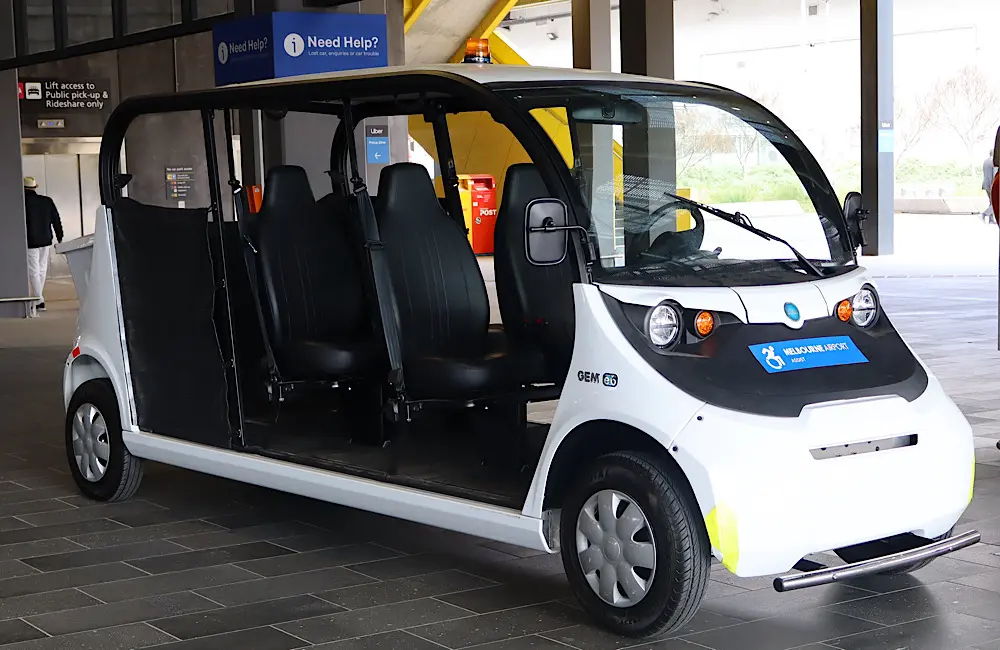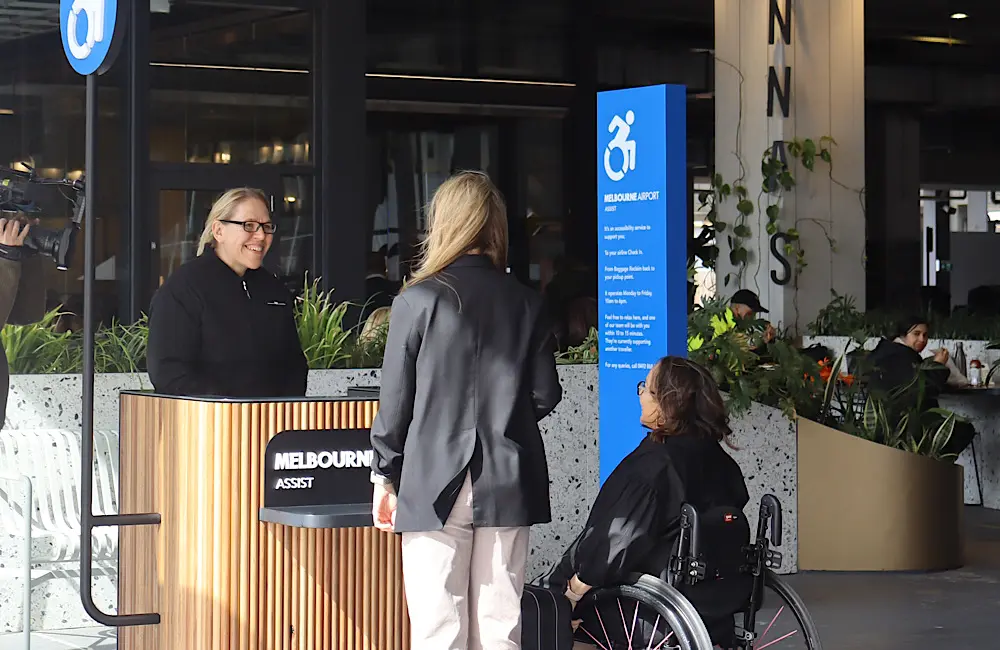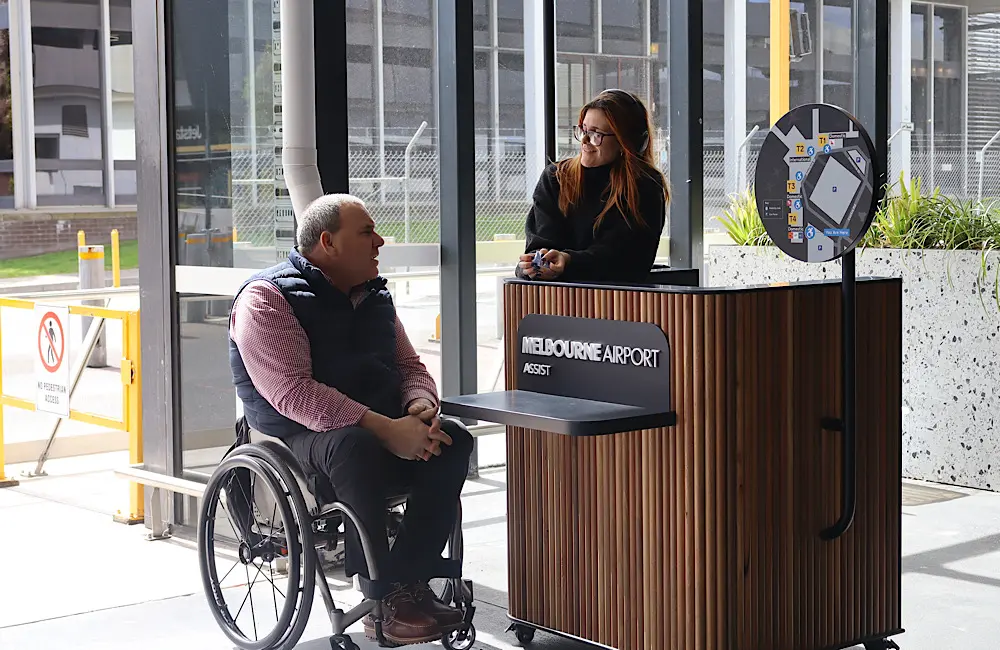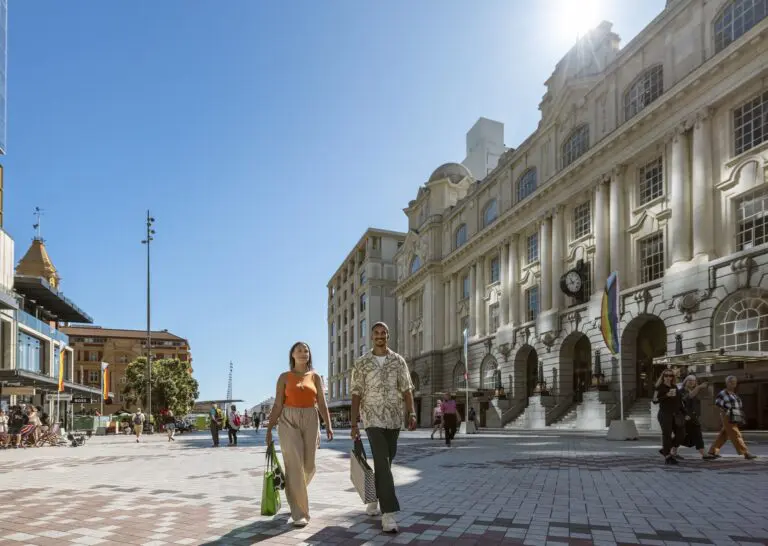Airports worldwide are under mounting pressure to improve accessibility. Melbourne Airport is responding with new mobility hubs launching in September 2025, designed to support passengers from car park to gate.
The new service, called Melbourne Airport Assist, will operate daily from 6am to 10pm. Delivered in partnership with Travellers Aid, a not-for-profit with more than a century of experience in the disability sector, it builds on a successful 2024 trial.
By extending support beyond airline services, the program ensures travellers encounter human assistance at each stage of their airport journey.
Accessibility in focus
Melbourne Airport CEO Lorie Argus said the hubs are part of a broader commitment.
“Improving accessibility is a key focus for us, and we’re proud to deliver a service that makes it easier for travellers with mobility issues to get around the airport,” she said.
“This service will help connect our car parks with the terminals and the terminals with each other, providing travellers with help wherever they need it in their airport journeys.”

A global trend
Melbourne’s move reflects a wider international shift. Airports from London to Singapore are investing heavily in accessibility, with regulators monitoring performance closely. In 2023, Heathrow was rated poorly by the UK Civil Aviation Authority after failing to meet standards, while Changi expanded mobility programs to strengthen its reputation for service.
For Australian airports, the message is clear: accessibility is now a competitive benchmark as well as a compliance issue.
The value of accessible travel
Travellers with a disability represent a powerful market. Tourism Research Australia reports they contribute billions in annual visitor spend, while the UN World Tourism Organization identifies accessibility as a driver of sustainable growth.
Argus said the program was designed with those travellers in mind.
“Millions of passengers come through our doors each year and each has varying needs, so this service is designed to provide them with dignity, independence and care,” she said.
Building for the future
The hubs will expand alongside the airport precinct. When new pick-up and drop-off areas open in 2026, Melbourne Airport confirmed the service will extend into those facilities.

“This is a long-term investment in accessibility at Melbourne Airport and has been designed to extend to and from our new pick-up and drop-off areas when they open later next year,” Argus said.
Why it matters for agents
Accessibility is becoming central to how airports compete and how agents sell. By removing barriers at a critical point in the journey, Melbourne Airport’s new hubs make it easier for agents to recommend air travel to clients who may have previously hesitated.
It reinforces a broader industry reality: inclusivity is no longer optional, it is infrastructure.
KARRYON UNPACKS: Accessibility is now a benchmark for airports worldwide. For agents, Melbourne’s mobility hubs deliver assurance that clients with mobility needs can move through the airport with confidence.





